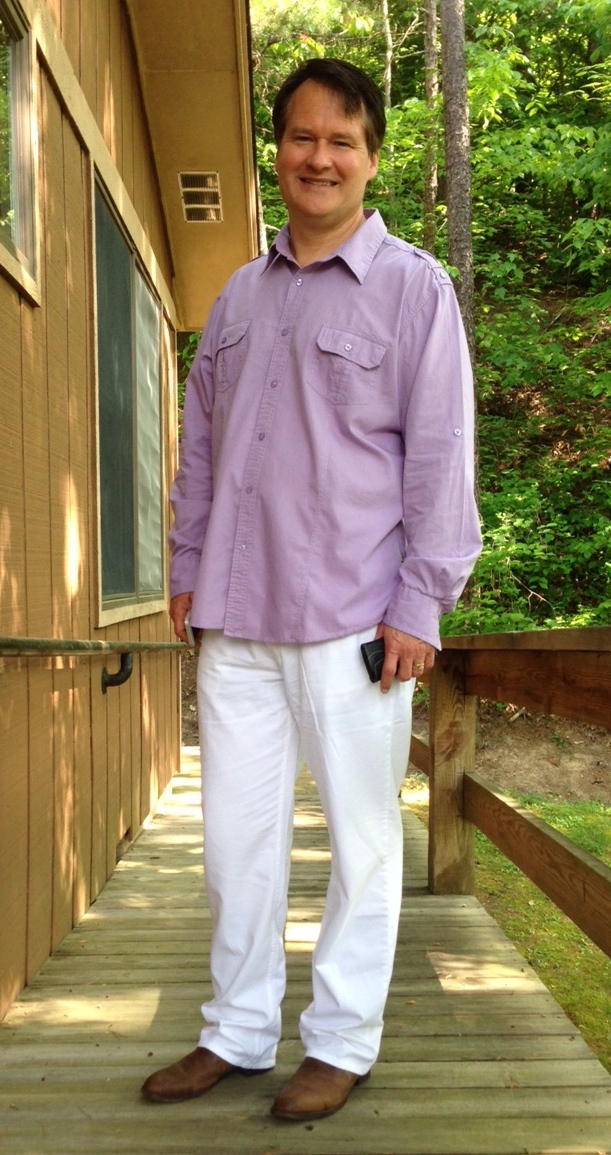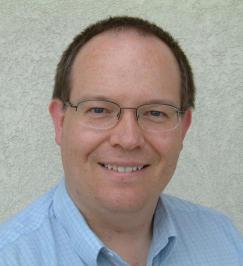Student Stories
We asked some of our SAO students about their experience in SAO. Here are their responses.
|
My journey to SAO can best be described as "hang in there". I always loved the outdoors and would spend hours watching birds, hanging out around ponds collecting tadpoles and exploring every trail in the neighborhood. I have fond memories of watching the kids science show "Zoom" where I would attempt the various science experiments. My love for the natural world led me to majoring in Biology in university. Although I chose a military career as an Air Navigator, my love for the natural world never diminished. When I was learning celestial navigation I became interested in Astronomy. I wanted to learn more about the nature of the stars and the workings of the universe. I saw an ad in Astronomy magazine and looked into it further and decided to give it try. I was not sure what to expect from a Masters program offered online but my fears were quickly subdued as I enrolled in my first unit. The instructors were first rate and the course's use of Newsgroup participation allowed for flexibility in scheduling time for the course. The program required a lot of effort and many times I didn't think I would make it through the unit. I was fortunate enough to make lasting friendships with my fellow students and they were very helpful in encouraging me to just hang in there. I am very glad that I persevered. The knowledge gained through the SAO program has allowed me to start an outreach program at local schools where my mission is to talk about astronomy in hopes of showing how much fun science can be. I look back on my 6 years at SAO and still don't know how I made it through. I can remember comments from my fellow aircrew complaining about how much more stuff women required. Little did they know my bags were filled with research material for my project! I always enjoyed looking at the night sky but now, thanks to SAO, it makes a lot more sense! Laura McLarnon, Canada |

Laura McLarnon. Image credit: LM |
|
My journey through SAO was a return to my roots, in a way. I can't remember a time in my life when I wasn't fascinated by astronomy and space. I'm too young to remember the Apollo moon landings, but I do recall hearing about Skylab in 1973-4, and like Glen Mackie, I too "read the print off of" a copy of the `The Universe' from the LIFE Nature Library series. In my hometown of Ann Arbor, Michigan, USA, a man named Jim Loudon gave free public lectures on astronomy and space for many years, and I was an enthusiastic devotee of these lectures. As an adolescent, I developed a new interest - mountains. Despite growing up thousands of kilometers from the American West, I became entranced by mountaineering, and after some climbing trips to mountains in the western U.S., I pursued undergraduate study at the University of Washington. Despite entering the UW as a physics major, with the dream of becoming an astrophysicist, I was caught by the siren song of geology, which became my undergraduate major. At the University of Southern California, I studied the rocks and structure of a mountain range in California's Death Valley region for my Ph.D.. (In a curious coincidence, my field area was adjacent to a tiny `ghost town' called Ballarat, whose name was indeed inspired by the Victoria gold rush.) My interest in teaching eventually led me to De Anza College in Cupertino, California, where I taught introductory university courses in geology for about ten years before I enrolled in SAO. A chance encounter with some of Silicon Valley's many amateur astronomers led me to a deep involvement with that hobby, even going so far as to visit Coonabarabran, NSW twice for observing trips. By 2008, it simply felt right to extend my teaching duties at De Anza to astronomy. SAO turned out to be a good `fit' for an instructor like me, wishing to become qualified to teach a new subject. Some of my SAO coursework occurred during sabbatical time, but much of it happened while I was also teaching my regular course load. Some of my strongest memories from SAO are of observing galaxies from the dark skies of Lassen Peak, a volcano in northern California. The hours spent visually `mapping' M31, M33, etc., from a perch on the flank of a volcano that last erupted only 100 years ago were tiring and difficult, but glorious, too! They were a powerful blend of geology and astronomy. Marek Cichanski, USA |

Marek Cichanski. Image credit: MC |
|
I was interested in science already as a child, and my particular love with astronomy began with Carl Sagan's Cosmos TV series - and it got fuelled with science fiction in the guise of Star Wars, Battlestar Galactica and Space:1999. However, I did nothing much apart from reading an occasional book in astronomy - until 2002. That year, the Finnish astronomer and writer, Esko Valtaoja, won the Finlandia prize for best non-fiction work with his book "At home in the Cosmos". The book resonated deeply, and the childhood interests blossomed into adulthood action: I joined the local astronomy club, bought my first telescope and subscribed to Sky & Telescope. A full page ad in S & T in 2004 alerted me to the possibility of studying astronomy on my spare time within the Swinburne Astronomy Online. The SAO public web pages, describing the courses and instructors, were written in such an engaging, welcoming and fun way that I did not have to think long about enrolling. After the first calendar year, during which I hogged two units per semester, I settled down to a "scenic route" pace of one unit per season - allowing me more time to savour the course contents, and more hours of sleep, to my wife's relief. The five years I spent with SAO were filled with constant dwelving into books, writing essays, projects and newsgroup postings, but also with joy of learning and observing, as I did as many observational projects as possible. The SAO course offering provided a broad overview through the varied landscape of astronomy, including my favorites astrobiology, SETI and the history of astronomy. In addition to instructors and fellow students, one particular support I like to point out is the amazingly ample supply of professional journals available via the Swinburne library. SAO brought home the fact that the night sky and our planet is shared by all people around the globe, and many friendships formed over the Internet have carried through to real world, too - most recently in the form of a road trip through Southwestern USA to see e.g. Grand Canyon, Lowell Observatory and the Meteor Crater with a group of seven, which included in addition to myself two other SAO students and one instructor. Although my studies have not led to a job in astronomy, the expanded knowledge of astronomy has enriched my work at the local astronomy club. I am also currently working as a member of the advisory board for the "One Earth: New Horizons Message" initiative. Pekka Rautajoki, Finland |

Pekka Rautajoki. Image credit: PR |
|
My childhood fascination with astronomy grew exponentially in 1997 when comet Hale-Bopp made its spectacular passage through the inner solar s\ ystem. My wife and I truly enjoyed those beautiful evenings with Hale-Bopp - an incredible sight indeed! As a result of this most memorable ex\ perience, I found myself increasingly interested in learning more about astronomy and, in particular, the astrophysical concepts involved. I b\ ecame an active amateur astronomer and began participating in outreach programs for NASA/JPL as a "Solar System Ambassador." But, I really wan\ ted to increase my knowledge through a formal educational process. I wanted to learn as much as I could from professional astronomers. I eventually ran across an ad for SAO in Astronomy magazine. I fondly recall the excitement I felt when I realized I could obtain an advanc\ ed degree in astronomy - online! At the time, I was working full-time in law enforcement as an FBI agent. SAO gave me the opportunity - and fl\ exibility - to pursue my dream. It was certainly difficult at times given my busy work schedule, but it was definitely worth the effort. The p\ rofessors (and grading assistants/staff) were all excellent. And the learning materials provided were both challenging and engaging. My SAO degree has opened a new door for me in retirement. I'm currently teaching astronomy at a local college! I can't thank the fine folks\ at SAO enough for the quality education I received and, most importantly, the opportunity to share my increased knowledge - formally - with o\ thers. After all, astronomy is an experience that should be shared! Jerry L. Garner, USA |

Jerry Garner. Image credit: JG |
|
My interest in astronomy began when my parents bought me a sticker book on the subject when I was four. I received my first telescope when I was 12 (a 60mm refractor). In high school I built my first radio telescope out of an old television. It was a this time I discovered and joined the Royal Astronomical Society of Canada (RASC). I took astrophysics as an undergraduate but ended up in political science. I took a further degree in education and became a high school teacher. All this time remaining a fairly active amateur astronomer. After a few years of teaching I decided to look at taking a master's degree. While considering a program I came across an ad link to Swinburne Astronomy Online. After some research into the Swinburne University of Technology as well as determining that my district didn't require any particular topic of study I chose the Master of Science in Astronomy program at SAO. The format of the program allowed me to maintain my day job and study part time. I planned out my courses and began my journey through the SAO program. I took a couple of courses at a time and found the work quite stimulating. I particularly enjoyed doing the observational astronomy and resulting data reduction from many of the projects. This also provided an excellent excuse to purchase many pieces of astronomical equipment such as a CCD imager! I enjoyed the opportunity to use the Swinburne supercomputer to smash galaxies together during the computational astrophysics major project and to do some observational research on planetary nebula for the astronomy and astrophysics major project. In my time since completing my degree I have continued my observations of planetary nebulae. My degree has also allowed be to pursue an opportunity that presented itself in the form of becoming a sessional instructor at the University of Lethbridge teaching a course in introductory solar system astronomy! Jason Nishiyama, Canada |

Jason Nishiyama. Image credit: JN |






